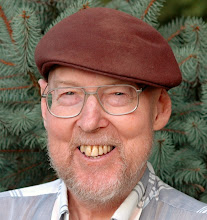“Most organizations are designed so that a few people make decisions and the role of the rest of the people in the organization is to complain about the decisions,” I said at a dinner last fall.
As I said it I felt my stomach drop and the drop had nothing to do with the dinner or my dinner companions--Stephanie Grimes, Evergreen Leaders president, her husband Rodney, and a couple of other people from their church and my wife Sarah.
My stomach dropped because I suddenly remembered all the complaints I had been fielding from members of Plow Creek Fellowship over the previous year. I’ve been an elder of PCF, a communal group, since 1981. The group owns 190 acres, runs businesses, serves as a spiritual community, and sends members on mission. Plow Creek was founded as a seven-day a week way of being Christian rather than the dominant model of church on Sunday’s and maybe a time or two in between.
It was also founded to be a group where everyone could have an equal voice in decision-making and where each person had an important role in the life of the community.
But when my stomach dropped I asked myself: Could it be that the complaints are coming because PCF is designed for a few people to be in the role of decision makers and the rest are given the role of complaining about the decisions?
On the face of it PCF is designed to do just the opposite. All major decisions are made in members meeting by consensus. But organizations are complex and leaders need to dig deep to understand the systems at work in their organizations.
For the past three years, since several other people and I founded Evergreen Leaders, I have been thinking deeply about what makes organizations thrive. After doing workshops for two years on the topic, much reading and after much thinking (and prayer), last spring I identified 7 paths that organizations use to thrive.
The smart and friendly systems path is one of the seven paths thriving organizations use. The path is based on the principle that organizations thrive or shrivel on the systems they set up for getting things done.
Organizations that shrivel focus on the paradigm: we’ve always done it this way. Organizations that thrive focus on the paradigm: we‘re always looking for ways to make our systems smart and friendly.
There’s a very good reason organizations tend to keep old systems. Once upon a time those systems were great, served the organization well, and, in fact, helped the organization to thrive.
But then slowly reality shifted and the ways of doing things that helped the organization thrive no longer do. Leaders can throw all kinds of energy into making the old systems work but that doesn’t seem to help the organization get back to the thriving days.
A long time ago farmers went through the same experience. They planted corn on a new piece of ground and got an amazing crop. Great, they thought, I’ll do the same thing next year. They did and got another great crop of corn. Slowly but surely the corn crops began to dwindle.
The farmer thought deeply and decided to try beans on the piece of ground. He got a fantastic crop, Great, he thought, this ground is best for beans. Year after year he planted beans and slowly but surely the bean crops began to dwindle.
He thought deeply again and planted corn on the piece of ground. He got a great crop of corn. Then the next year he planted beans and got a great bean crop. The next year he planted corn and got a great corn crop. Thus was born crop rotation.
Organizations that are always looking for ways to make their systems smart and friendly are like the farmers who discovered crop rotation. This is not change for change sake but change to help the organization thrive.
As I thought deeply about the Plow Creek decision-making system I realized the growing frustration within the organization pointed to a need for crop rotation. We needed to make changes in how we made decisions as part of taking the smart and friendly systems path.
I thought more about the need for change in the fellowship I realized that in all likelihood our frustrations were rising not only from a need for smart and friendly systems but also from major changes in the context that PCF operates in.
Tomorrow is my day off. On Saturday I’ll post part II focusing on how Evergreen Leaders’ ecosystem path helped as I struggled with the changes needed in PCF decision-making model.
Thursday, August 31, 2006
Subscribe to:
Comments (Atom)

